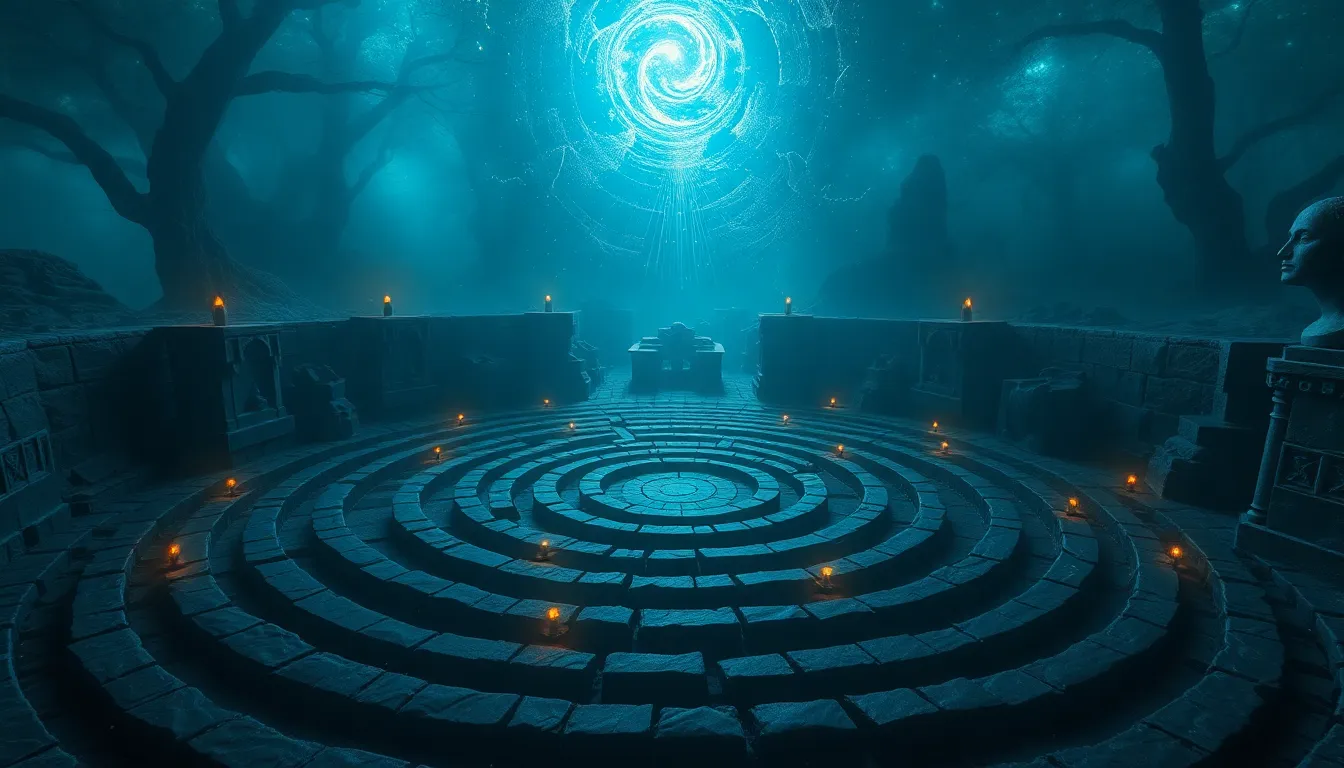The Sacred Labyrinth: Discovering Sacred Paths
1. Introduction to Sacred Labyrinths
Labyrinths are intricate, winding paths that lead to a center point, often symbolizing a journey of self-discovery and spiritual exploration. Dating back thousands of years, these sacred structures hold historical significance in various cultures around the globe. They have been used as tools for meditation, pilgrimage, and rituals, reflecting the spiritual beliefs of societies from the ancient Greeks to Native American tribes.
2. The Symbolism of the Labyrinth
The symbolism of labyrinths is rich and multifaceted. At their core, they represent the journey of life, filled with twists and turns. Walking a labyrinth can symbolize the search for meaning, understanding, and inner peace. Many interpret labyrinths as metaphors for:
- The complexity of life’s journey.
- The pursuit of enlightenment and self-awareness.
- The cyclic nature of existence and personal growth.
As individuals navigate these paths, they often reflect on their own life experiences, challenges, and aspirations.
3. Historical Context and Evolution
Labyrinths have their origins in ancient civilizations, with the earliest known labyrinth dating back to the Minoan civilization on the island of Crete. The legend of the Minotaur, a creature that dwelled within the labyrinth, illustrates the profound connection between these structures and mythology.
Through the ages, labyrinth designs have transformed. The classical labyrinths often featured intricate, unicursal patterns, while modern interpretations may include various styles and designs that reflect contemporary spiritual practices. This evolution mirrors humanity’s changing relationship with spirituality and the quest for meaning.
4. Different Types of Labyrinths
There are primarily two types of labyrinths: classical and modern.
- Classical Labyrinths: These are typically unicursal, meaning there is a single path that leads to the center and back out again. The most famous classical labyrinth is the one at Chartres Cathedral in France.
- Modern Labyrinths: These can be unicursal or multicursal, allowing for multiple pathways. Multicursal labyrinths can be more complex, often resembling mazes, where one can get lost.
The choice between unicursal and multicursal designs often depends on the intended purpose of the labyrinth—be it meditation, reflection, or simply exploration.
5. Sacred Sites and Notable Labyrinths Around the World
Labyrinths can be found in many sacred sites, often serving as focal points for spiritual practices. Some notable labyrinths include:
- Chartres Cathedral: Located in France, this medieval cathedral features a famous labyrinth on its floor, used for pilgrimages and meditative walks.
- Knossos: This archaeological site on Crete is home to one of the earliest known labyrinths, steeped in myth and history.
- Grace Cathedral: Situated in San Francisco, this cathedral has two labyrinths that invite visitors to walk and reflect.
These labyrinths serve not only as historical landmarks but also as modern-day spiritual spaces for contemplation and healing.
6. The Spiritual Journey: Walking the Labyrinth
Walking a labyrinth is often viewed as a meditative practice. The act of walking allows individuals to enter a contemplative state, where they can process thoughts and feelings. Many find that the journey inward leads to clarity and insight.
Personal reflections from labyrinth walkers often highlight themes of:
- Finding peace in the midst of chaos.
- Gaining new perspectives on life’s challenges.
- Experiencing a sense of connection to the divine.
Each walk becomes a unique spiritual journey, inviting individuals to explore their inner landscapes.
7. Labyrinths in Contemporary Spirituality
In recent years, there has been a resurgence of interest in labyrinths within contemporary spiritual practices. Many retreat centers and wellness programs incorporate labyrinth walking as a form of meditation and healing. This revival is indicative of a broader movement towards mindfulness and self-care.
Labyrinths are now used in various settings, including:
- Spiritual retreats.
- Therapeutic environments.
- Community gatherings for shared reflection.
These modern applications continue to honor the ancient purpose of labyrinths as sacred spaces for transformation.
8. Designing and Creating Your Own Labyrinth
Creating a personal or community labyrinth can be a fulfilling project. The process involves several steps:
- Choose a Location: Select a space that is accessible and conducive to walking and reflection.
- Design the Layout: Decide on the type of labyrinth (unicursal or multicursal) and sketch the design.
- Gather Materials: Common materials include stones, bricks, or natural elements like grass and flowers.
- Construct the Labyrinth: Follow your design to lay out the path, ensuring it is clear and inviting.
This hands-on process not only creates a physical space for reflection but also fosters community engagement and collaboration.
9. The Psychological Benefits of Labyrinth Walking
Research has shown that walking labyrinths can have significant psychological benefits. Studies indicate that this practice can lead to:
- Increased mindfulness and presence.
- Reduced stress and anxiety levels.
- Enhanced emotional healing and clarity.
Testimonials from individuals who have walked labyrinths often express feelings of transformation and renewal, highlighting the profound impact of this ancient practice on modern lives.
10. Conclusion: Embracing the Journey through Sacred Paths
Labyrinths hold a timeless significance in personal and communal spirituality. They invite us to embark on a journey of self-discovery, reflection, and healing. Whether you are walking a labyrinth in a sacred space or designing your own, the experience can be a powerful tool for growth and understanding.
As you explore the concept of labyrinths, consider taking the time to walk one, allowing yourself to embrace the journey and uncover the insights that await. The sacred paths of labyrinths are not just physical structures; they are gateways to deeper understanding and connection.



